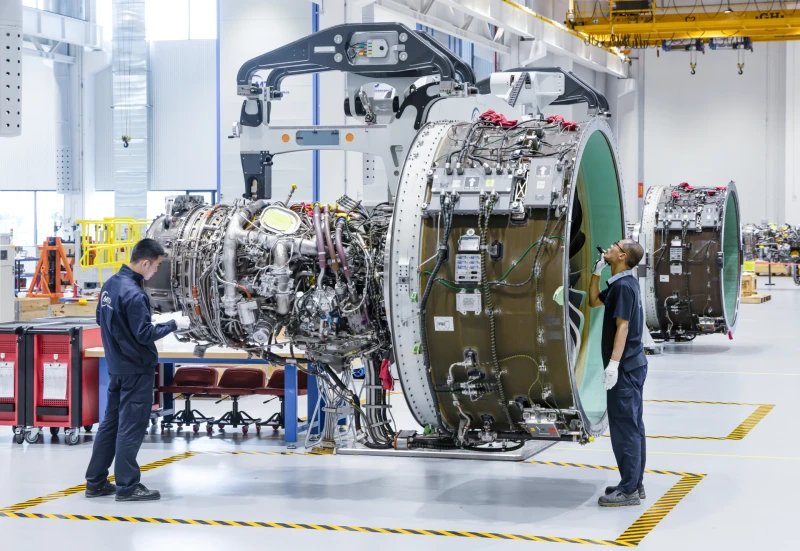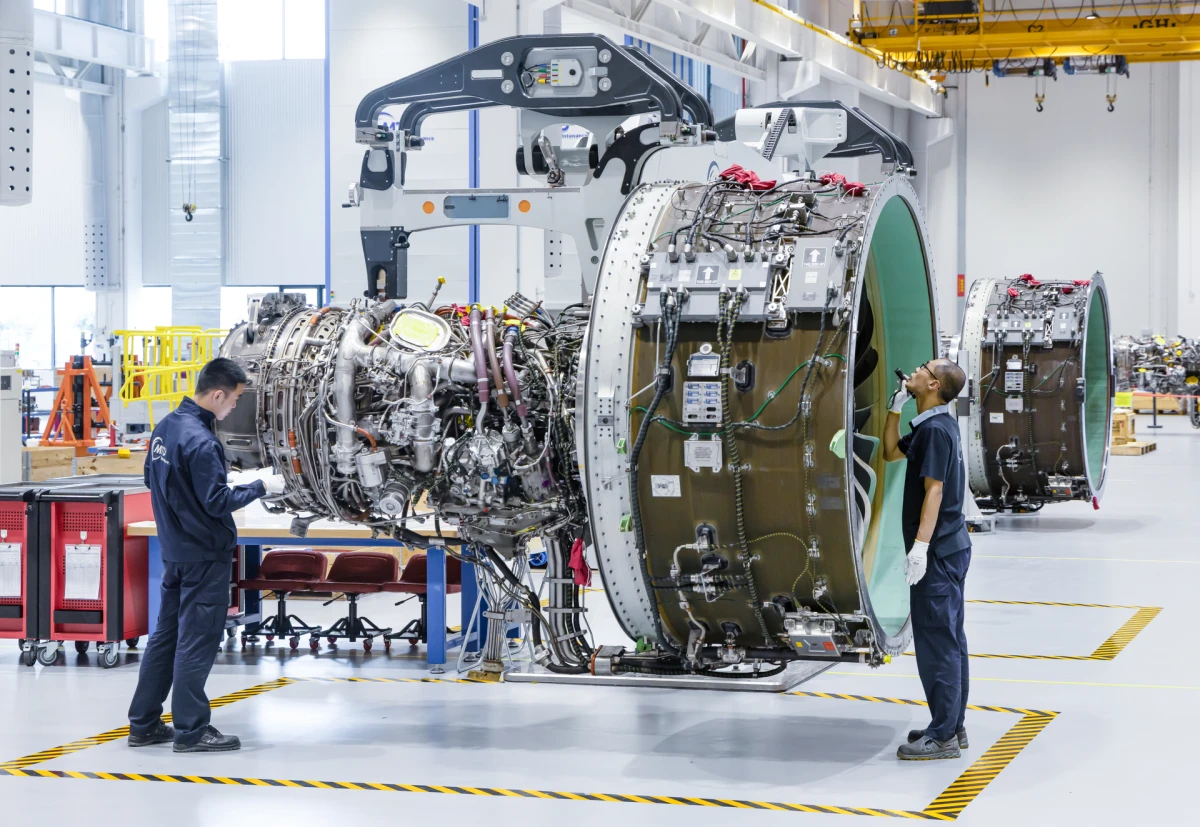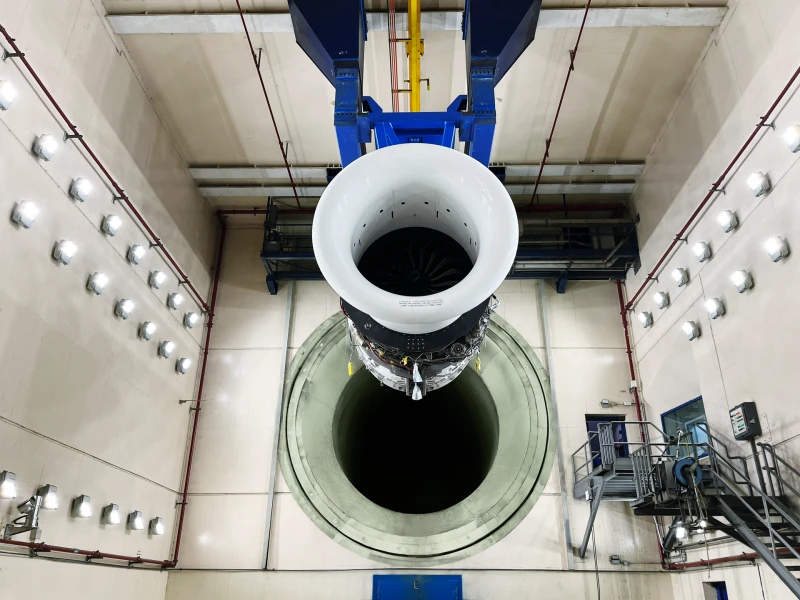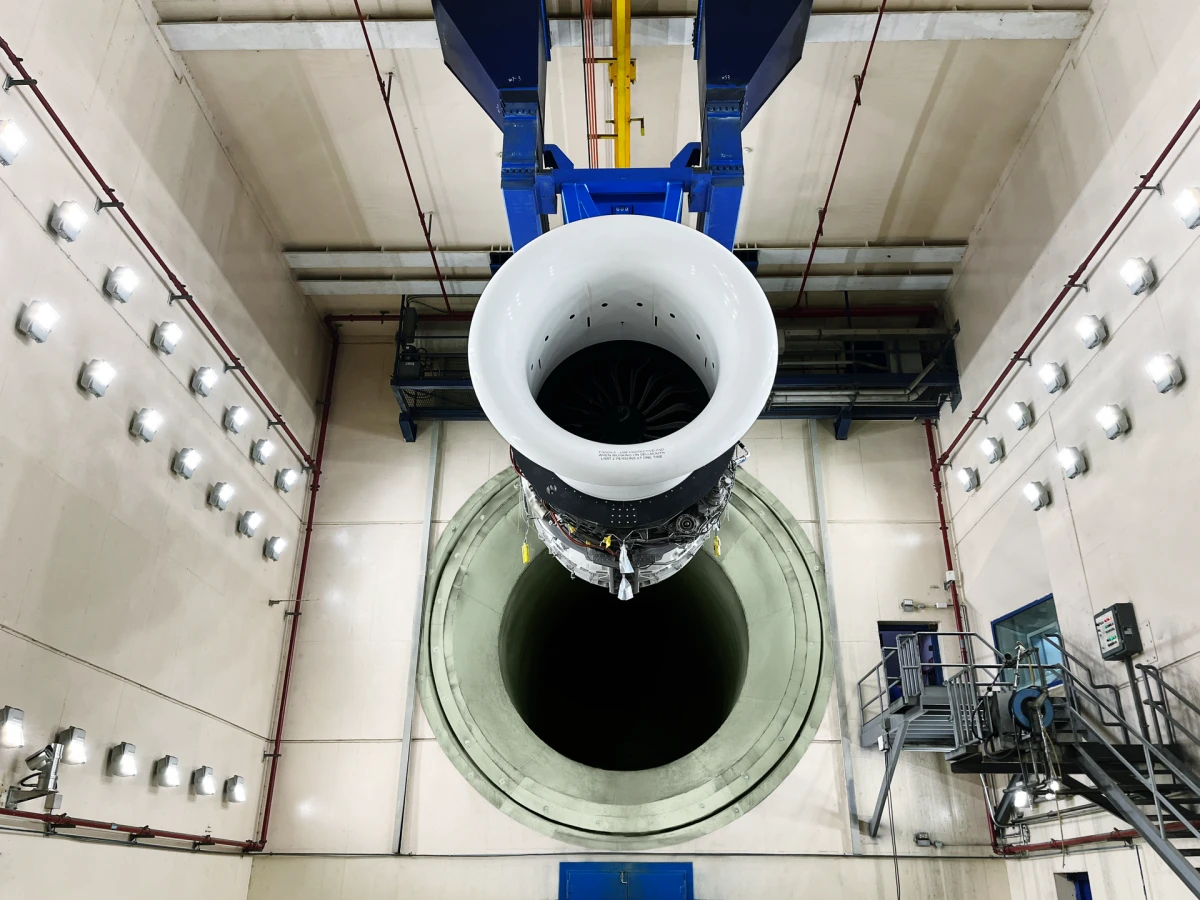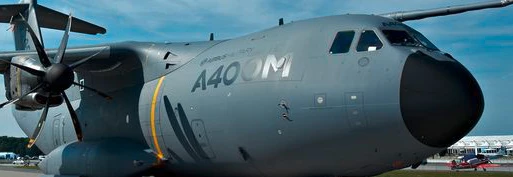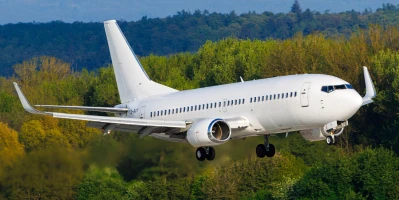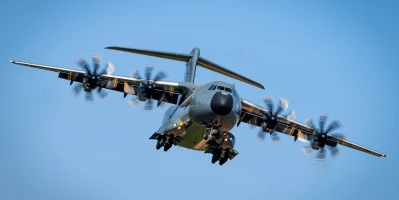good-to-know
Airbus A321XLR: A new chapter for aviation
The Airbus A321XLR will revolutionize long-haul flights because it can stay in the air for up to eleven hours. The bestseller has been in regular service since the end of 2024.
author: Isabel Henrich | 3 mins reading time published on: 19.09.2024
author:
Isabel Henrich
studied political science and communications. At MTU, she coordinates the editorial process of AEROREPORT and is responsible for the conception and development of its content.
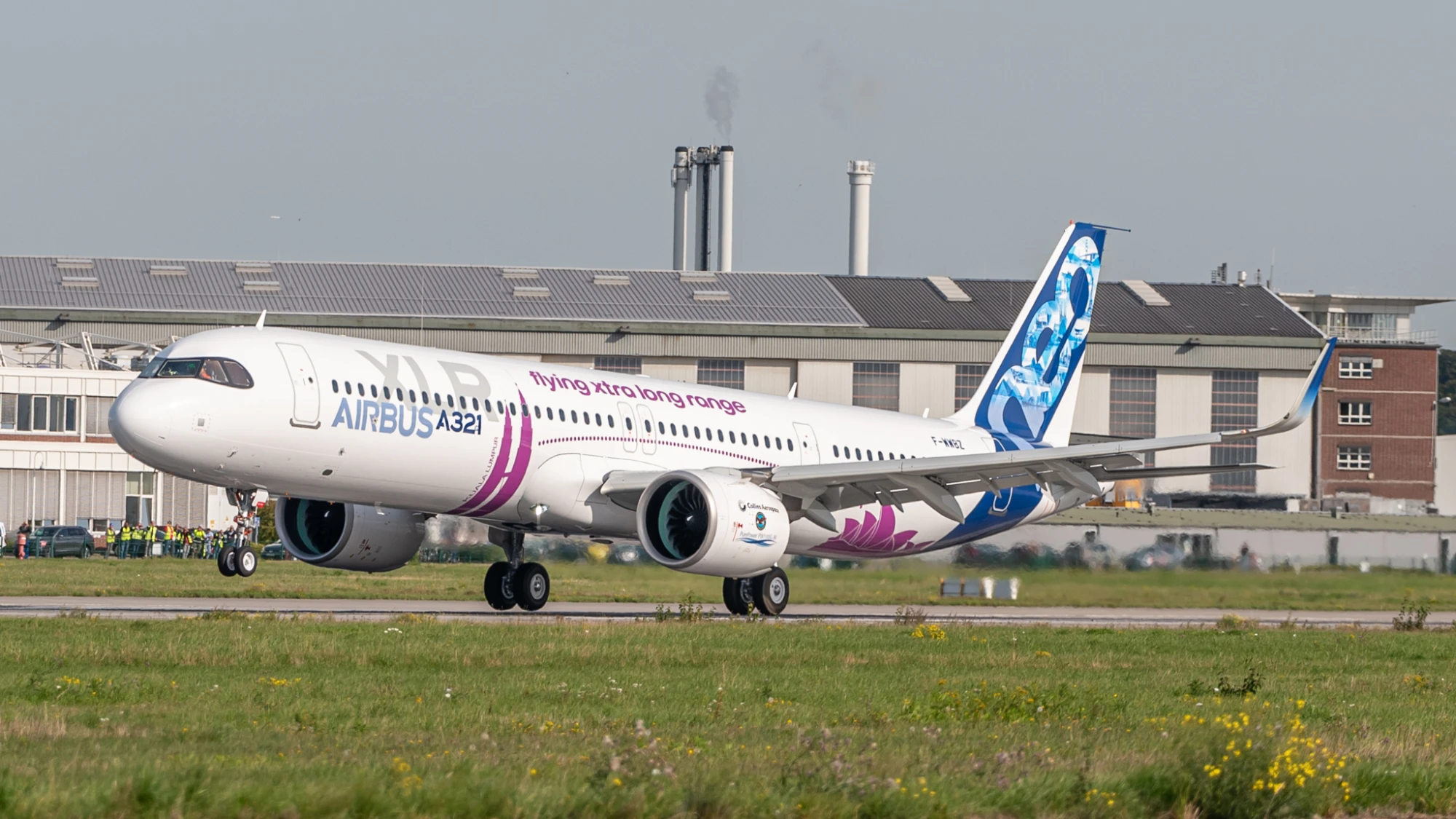
©Airbus SAS 2022
- Boeing 747: Queen of the Skies
- The Boeing 737: How a simple jet revolutionized aviation
- Airbus A400M – modern military transporter and all-around talent
- Airbus A220 – The innovative medium-haul jet from Canada
- Boeing 777X – the largest twin-engine jet in the world
- Airbus A321XLR: A new chapter for aviation
- The Airbus A380 – the world’s largest passenger aircraft
- Airbus A319 – a small aircraft for a wide range of tasks
- Airbus A320 – a medium-haul bestseller for almost 40 years
More than 30 years after the introduction of the Airbus A321, the European aircraft manufacturer has achieved a minor revolution: With hardly any external changes, the new A321XLR (Xtra Long Range) has an additional fuel tank on board with a capacity of 12,900 liters, which corresponds to around 10.6 metric tons of kerosene. This gives the narrowbody a range of up to 8,700 kilometers, or almost eleven hours of flight time—statistics that were previously the realm of widebody aircraft. And all this with the significantly lower operating costs of an aircraft with a narrow fuselage and just a single center aisle.
With an average of 180 seats in a two-class configuration, the A321XLR has also proven economical on long-haul routes—especially where the use of a larger jet isn’t worthwhile. For many airlines already using the A321ceo or A321neo on short- and medium-haul routes, the XLR makes for an attractive addition to their fleet. This fact is reflected in record orders for the aircraft: By spring 2025, around 550 orders had already been placed.
Since the A320’s maiden flight in 1988, Airbus has been continuously developing the model family. An early milestone was the A321LR (Long Range) in 2015, which allowed the likes of JetBlue to operate transatlantic flights.
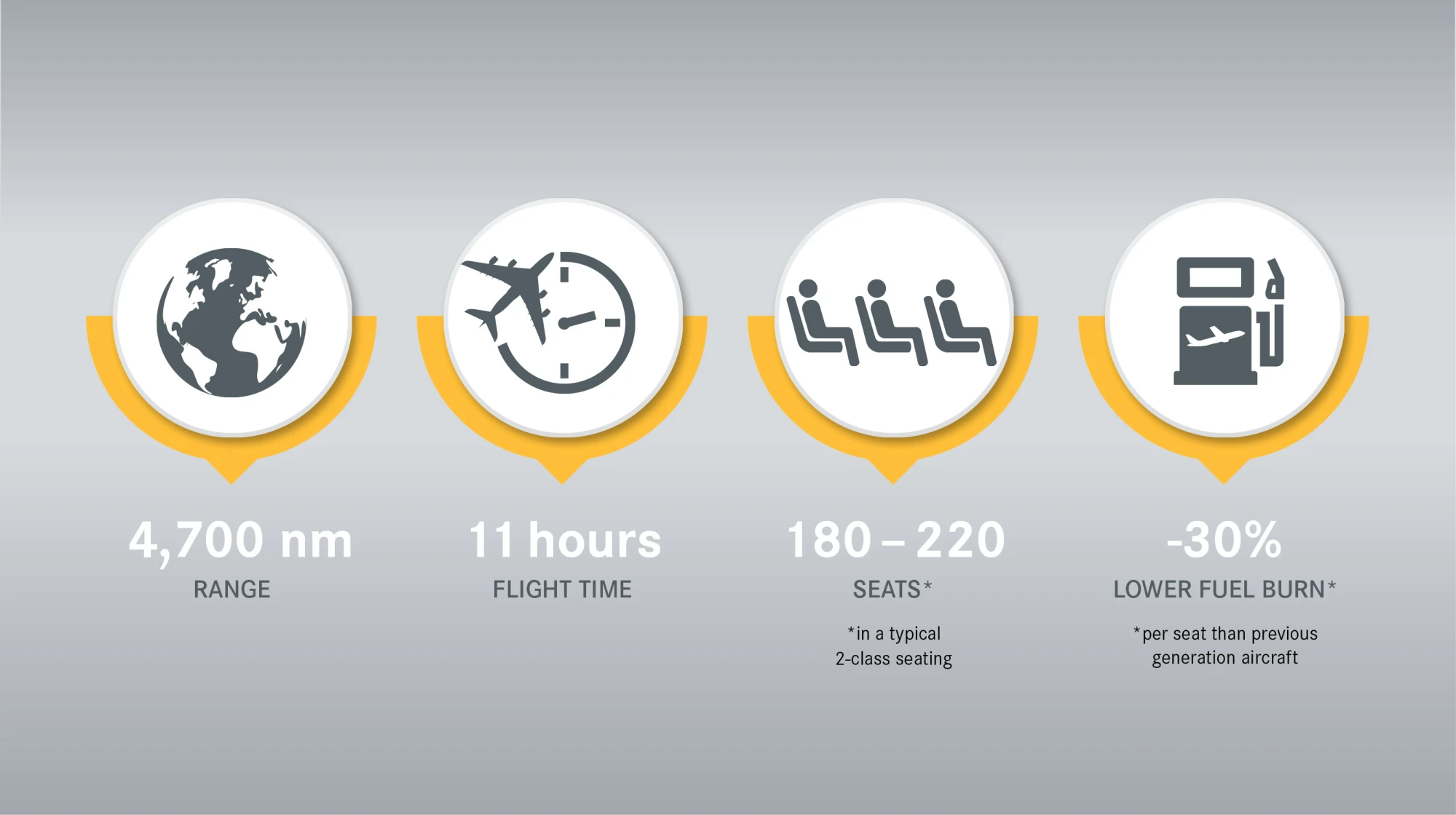
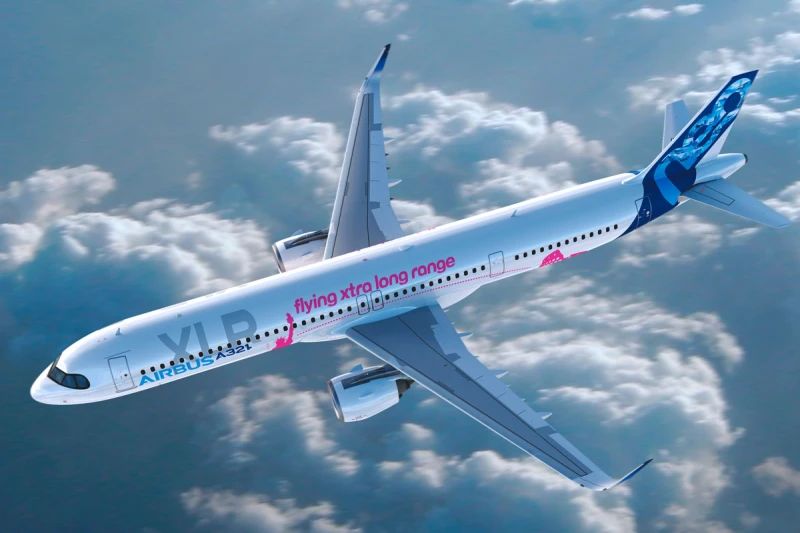

©Airbus


©Airbus
The Airbus A321XLR consumes 30 percent less fuel per seat than the previous generation of aircraft.
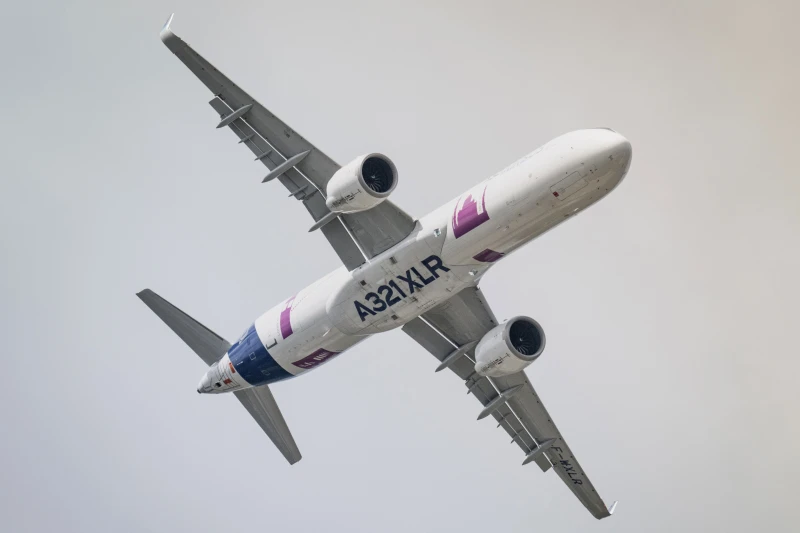

©Airbus SAS 2024


©Airbus SAS 2024
Costs per flight are 45 percent lower than those of a modern widebody.
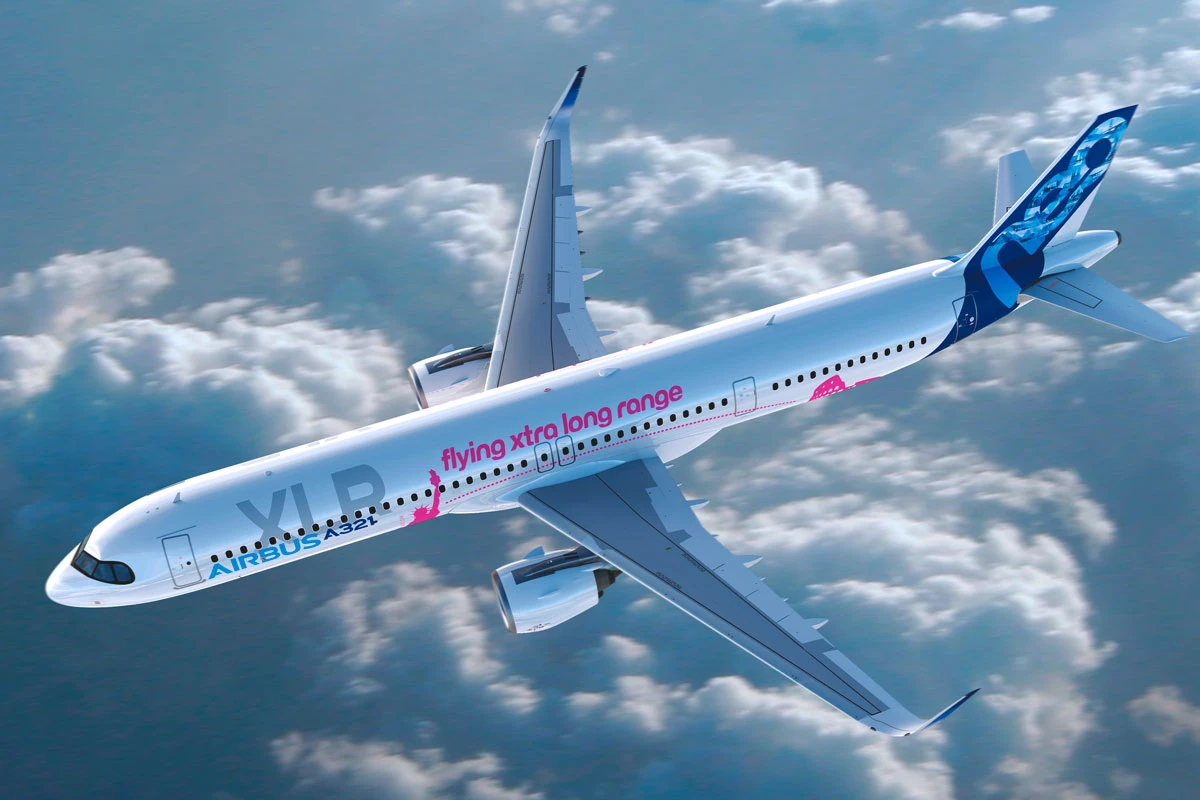
©Airbus
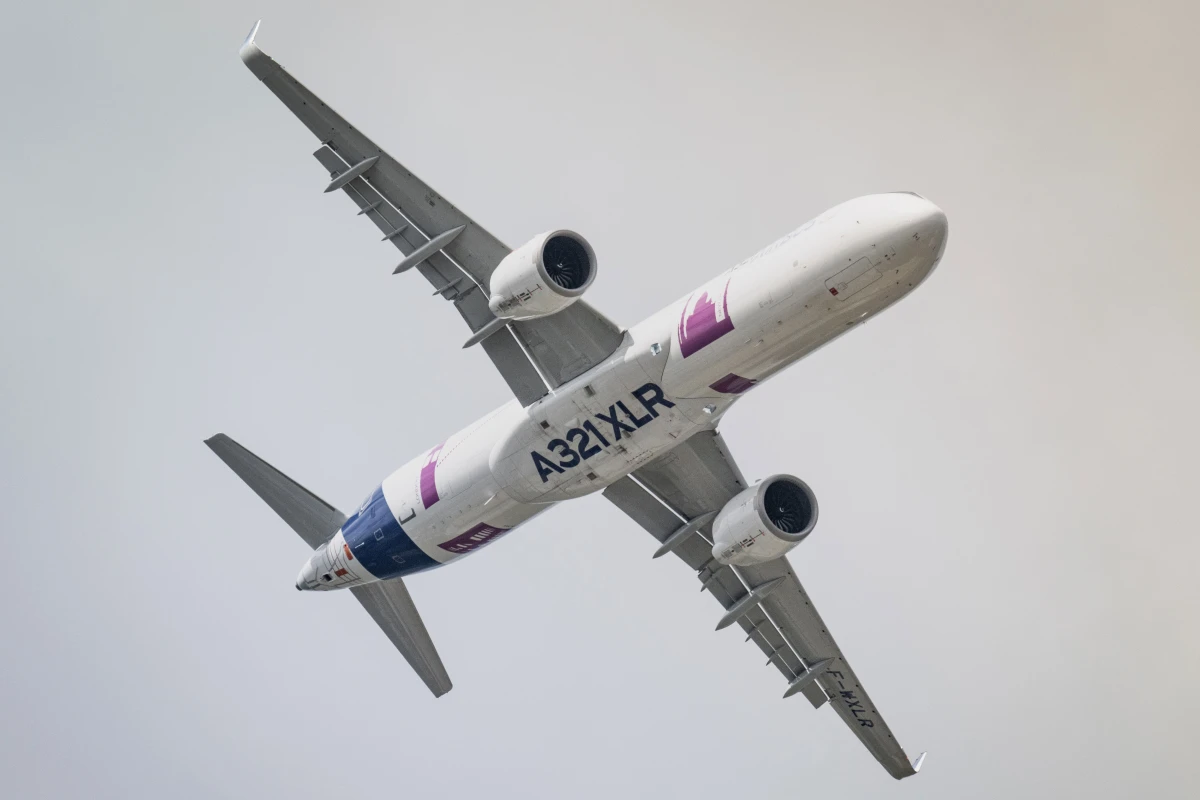
©Airbus SAS 2024
A321XLR: Facts, figures, dates
-
Iberia completed the first long-haul scheduled flight with an A321XLR on November 14, 2024, on the Madrid–Boston route.
-
Type certification of the A321XLR with LEAP-1A engines took place on July 19, 2024; the XLR version with PW1100G-JM engines was certified on February 21, 2025.
-
The A321XLR’s initial operating routes are primarily transatlantic connections—for example from Dublin to Nashville, Indianapolis, or Minneapolis. But it also serves longer routes from Europe to the Middle East, for example from London to Jeddah or from Milan to Abu Dhabi.
-
The A321XLR has a range of up to 8,700 kilometers (4,700 nautical miles) with a maximum flight time of eleven hours, making it the narrowbody aircraft with the longest range. By comparison, the A321neo’s range is around 6,480 kilometers (3,500 nautical miles), while the A321LR (Long Range) can cover 7,400 kilometers (4,000 nautical miles).
-
From the outside, the A321XLR looks no different from an A321 or its successor, the A321neo. The main innovation is hidden in the fuselage: While a normal Airbus A321 holds 19 metric tons of kerosene, the XLR model also has a permanently installed rear center tank in the rear underfloor area, which can hold 12,900 liters of fuel. This supplements the normal center tank, with a capacity of 8,190 liters. For XLR customers who want to make full use of the range, there’s the option of installing an extra tank ahead of the wings, like a luggage container in the cargo hold. That adds another 3,121 liters.
-
To make full use of the new fuel capacity, the maximum takeoff weight has been increased from the A321LR’s 97 metric tons to 101 metric tons.
-
In conjunction with the rear center tank, a larger, stronger belly fairing enables emergency landings on the belly. This extended fairing acts like a cushion on which the aircraft can glide safely to a standstill.
-
The A321XLR consumes 30 percent less fuel per seat than the previous generation of aircraft.
-
Costs per flight are 45 percent lower than those of a modern widebody.
-
In a typical two-class configuration, the A321XLR can accommodate between 180 and 220 passengers.
-
The A321XLR is also being deployed as a military transport: the Royal New Zealand Air Force is replacing its more than 30-year-old Boeing 757s with the new type. The aircraft will carry troops and equipment, support humanitarian relief missions in the Pacific, and operate government flights as well as missions to Antarctica – tasks for which its long range is a decisive advantage.
Airbus A321XLR
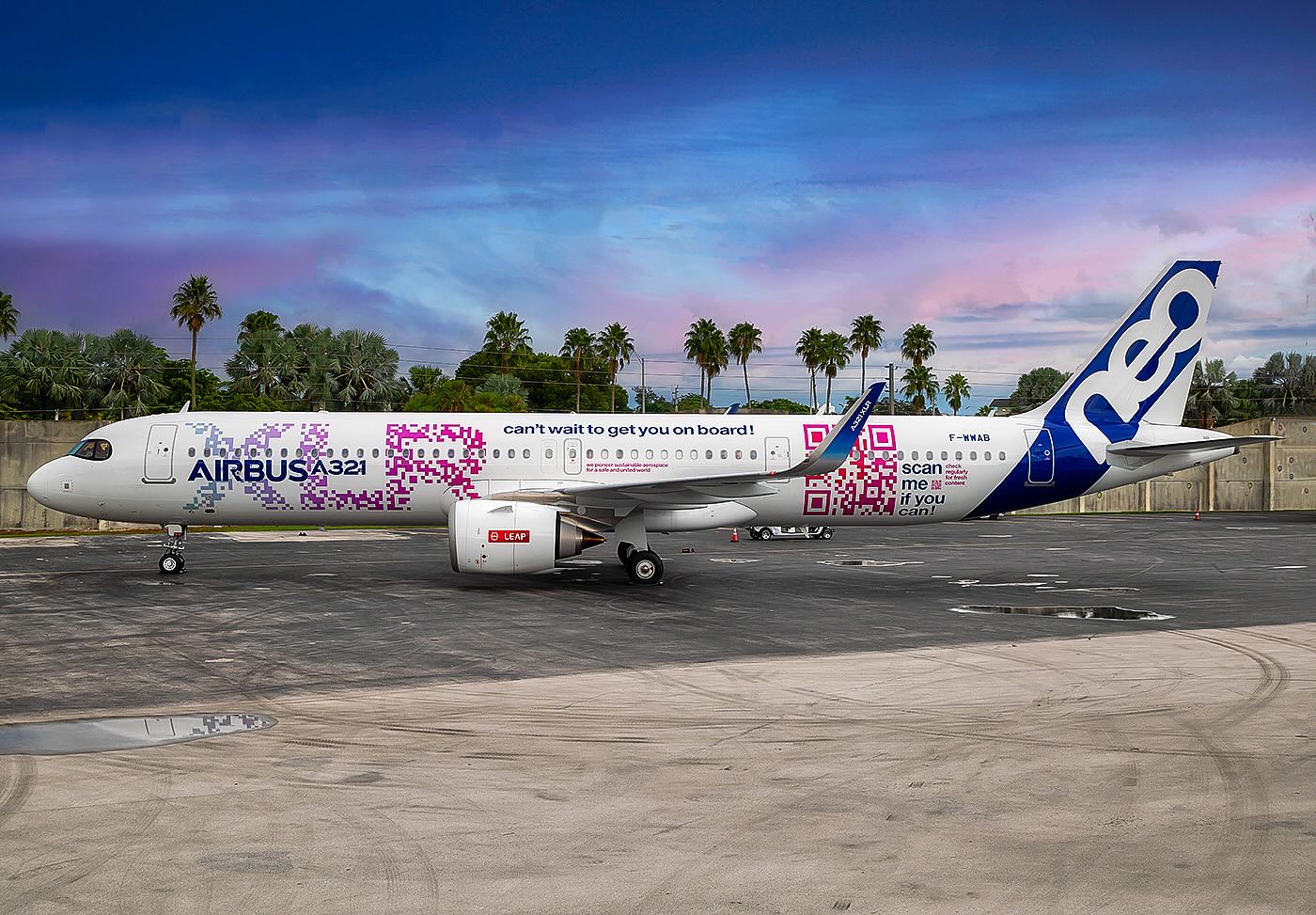
Airbus A321XLR
©Airbus SAS 2023
- Type:
- Twin-engine commercial aircraft
- Manufacturer/origin:
- Airbus, Hamburg/Toulouse
- Maiden flight:
- June 15, 2022
- Entry into service:
- November 6, 2024, with Iberia
- Produced:
- 2022–today
- Length:
- 44.51 meters
- Wingspan:
- 35.80 meters
- Range:
- 8,700 kilometers
- Cruising speed:
- 833 km/h
- Seats (max./typical):
- 244/182
The A321XLR’s engines
To power the A321XLR, just as with the A320neo and A321neo, airlines can opt for either the LEAP-1A from CFM International or the PW1100G-JM from Pratt & Whitney.
With a maximum thrust of 35,000 pounds, the PW1100G-JM is part of Pratt & Whitney’s highly successful GTF engine family. MTU Aero Engines, with a program share of 18 percent, is responsible for the high-speed low-pressure turbine and the first four stages of the high-pressure compressor. It also carries out the final assembly of one-third of the production GTF engines at its Munich site. These engines are maintained at MTU Maintenance Hannover, MTU Maintenance Zhuhai, EME Aero, and MTU in Munich.
The GTF family is synonymous with efficiency and economy. Compared to the previous engine generation, it represents a reduction in CO2 emissions of 20 percent with a noise footprint that is 75 percent smaller.
PW1100G-JM

PW1100G-JM
- Type:
- two-shaft turbofan engine
- Thrust (lbs):
- 24.4 -33 k
- Bypass Ratio:
- 12.5:1
- Fan diameter:
- 6.7 ft
- MTU competencies:
- Development and manufacture of various stages of the high-pressure compressor, of the high-speed low-pressure turbine and brush seals in all applications. 1/3 of the final assembly of the PW1100G-JM series engines takes place at MTU Aero Engines in Munich. Maintenance at MTU Maintenance Hannover, MTU Maintenance Zhuhai, EME Aero and MTU in Munich.
The LEAP-1A is a two-shaft turbofan engine with a maximum thrust of 35,000 pounds. The LEAP engine family from CFM International—a consortium comprising GE Aerospace and Safran Aircraft Engines—includes the LEAP-1A as well as two further models: the LEAP-1B, which powers the Boeing 737 MAX; and the LEAP-1C, which powers the Comac C919.
MTU Maintenance Zhuhai began maintaining the LEAP-1A in 2021. In addition, through MTU Maintenance Lease Services B.V. in Amsterdam, MTU offers a range of engine leasing options. As a premium MRO partner, MTU Maintenance Fort Worth will also be responsible for the complete maintenance of LEAP engines in the future. The LEAP engine family is characterized by a 15 percent improvement in fuel consumption compared to previous versions
LEAP-1A
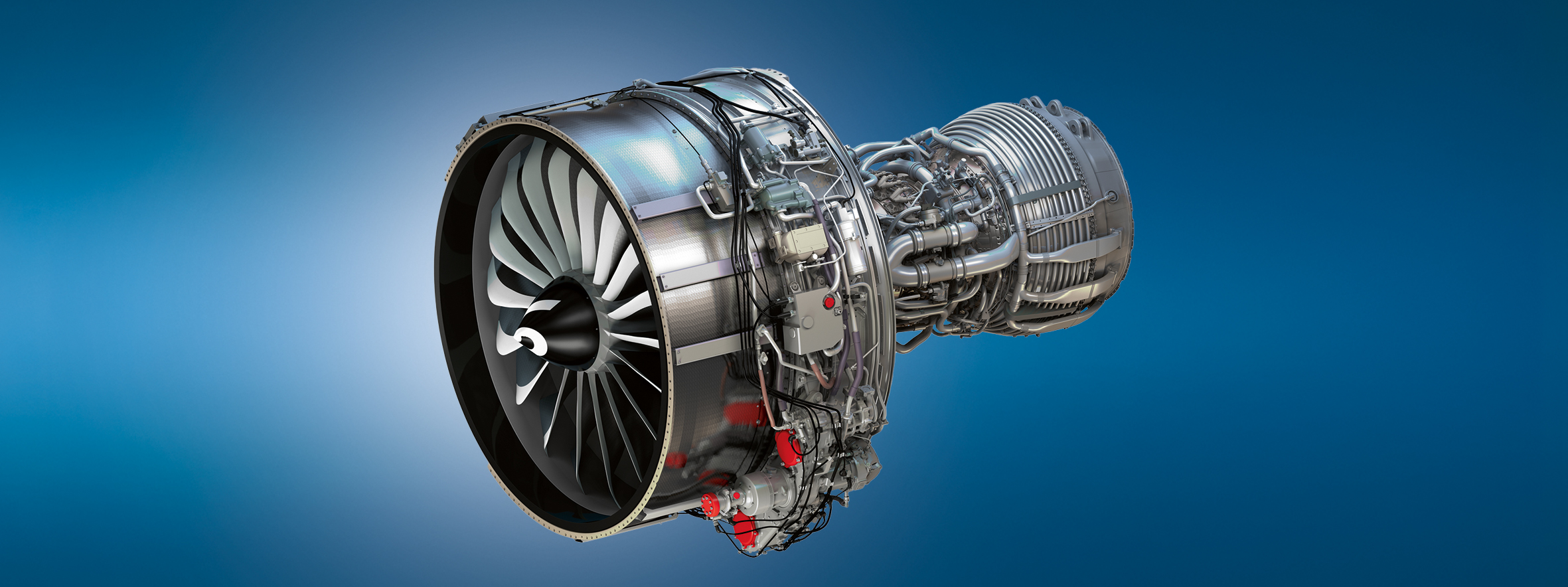
LEAP-1A
©Antonio Gomez/Safran
- Type:
- two-shaft turbofan engine
- Max. thrust:
- 35,000 lbf
- Bypass Ratio:
- 11:1
- Height:
- 7.8 ft
- MTU competencies:
- Maintenance by MTU Maintenance Zhuhai and on-site service activities. MTU Maintenance Fort Worth will be responsible for the complete maintenance of LEAP engines in the future.

And yet on this occasion there was a very special atmosphere in the air—quite a few people seemed moved, and some had tears in their eyes.
Aviation journalist
Aviation journalist Andreas Spaeth recalls
The A321XLR took off for the first time on June 15, 2022. Its maiden flight took place in Hamburg-Finkenwerder, where—despite the still noticeable effects of the coronavirus pandemic—the mood was exceptionally euphoric. Many people were delighted to finally be able to experience an event like that in person again. The sense of excitement felt even bigger than for other maiden flights.
At around eleven o’clock in the morning, all eyes turned to the end of the runway in the direction of the Elbe, where one of the world’s most famous cruise liners, the “Queen Mary 2,” had passed by only minutes ago. The spectators were taken unaware when the A321XLR, construction number 11000, registration F-WXLR, started moving off before its designated chase plane. Shortly thereafter, it started to accelerate and then took off at exactly 11:05 a.m.—almost directly in front of the lines of observers. In actual fact, it was a familiar picture: Aircraft from the A320 family have been taking off from Finkenwerder since 1987; the first A321 also completed its maiden flight right here in 1993. And yet on this occasion there was a very special atmosphere in the air—quite a few people seemed moved, and some had tears in their eyes.
Now it was time for the people who had made the journey here to the Elbe to wait. The maiden flight was scheduled to take up to four hours. Around 3:30 p.m., some 100 employees gathered in front of the delivery center. Then, from behind the giant factory building, the aircraft making its maiden flight came into view, made a tight turn over Finkenwerder after a flyover, and—after three hours and 35 minutes of flight time—touched down again at 3:40 p.m. The aircraft slowly taxied toward the crowd, accompanied by a celebratory water salute from the airport fire department. Applause and cheers erupted. It felt like endless minutes passed before the door finally opened. The crew of five descended the gangway one after the other to cries of “Bravo!” Everyone briefly took to the improvised stage and addressed a few words to the enthusiastic employees. Captain Thierry Diez was the first to speak. “This is your baby, too!” he shouted into the crowd—to loud applause. Then he added proudly: “This aircraft is as universal as a Swiss army knife. It lets us fly short-, medium-, and long-haul routes with the same pilot’s license.”



